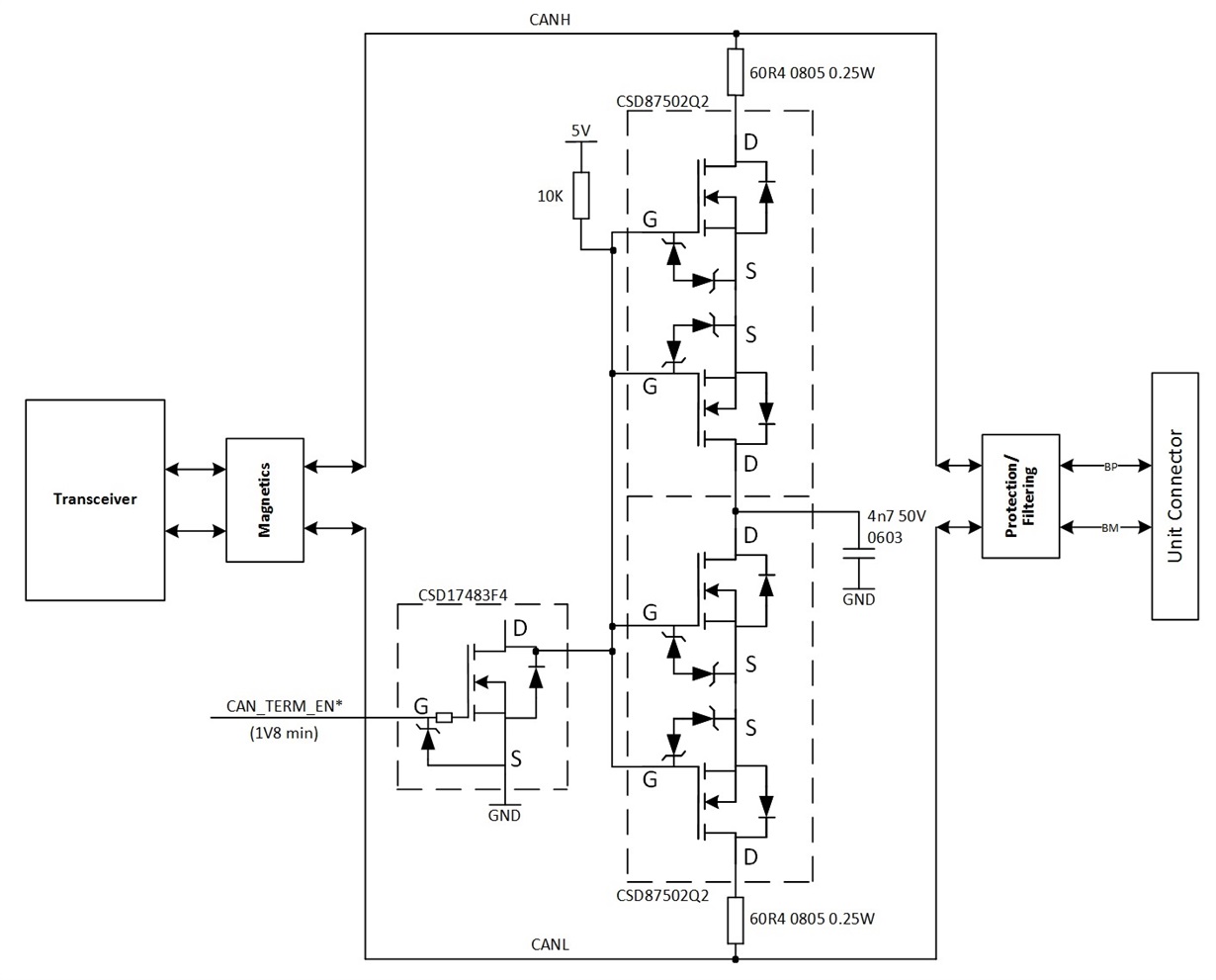Other Parts Discussed in Thread: TIDA-01238
We wish to implement software selectable termination using the circuit below.
The problem is, when voltage transients appear on the CAN bus, this could change the voltage level on the Source nodes of the MOSFETs and therefore the FETs could change state due to the VGS(th) being crossed.
How can we adjust this circuit to be resilient to transients of up to 60V, so that the FETs remain On or Off through these events?
Regards,
Richard.



